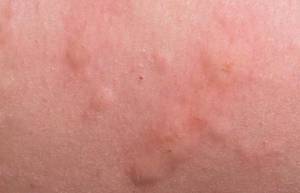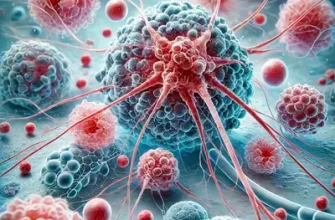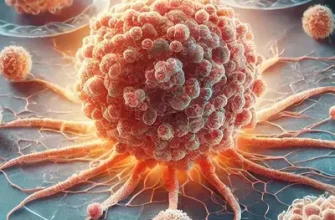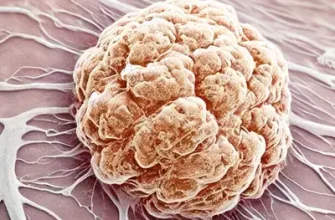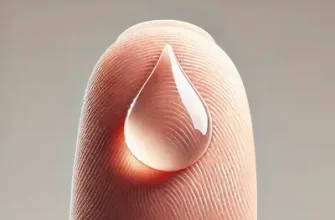Why Are My Nipples So Big? Let’s start with the truth: nipples come in all sizes, shapes, and shades—and that’s perfectly normal. Whether yours are tiny like a pencil eraser or broad and proud like a quarter (about 1 inch / 2.5 cm), it’s all part of human variation.
Large nipples or areolas (the darker area around the nipple) don’t automatically mean there’s a health problem. Most of the time, they’re simply a product of genetics, hormones, and your body’s own blueprint. In short: you’re not a medical anomaly, you’re just you.
As medical consultant Reyus Mammadli notes, “Nipple and areola size alone rarely signal disease. What matters is any sudden change, pain, or discharge. That’s when it deserves medical attention.”
What Is Considered a Normal Nipple or Areola Size?
In medical literature, the typical areola diameter for women ranges from 1.2 to 1.8 inches (3 to 4.5 cm), while the nipple itself often measures about 0.3 to 0.6 inches (0.8 to 1.5 cm) in diameter. However, this range is broad. Many women and men naturally fall outside it, and that’s still considered healthy.
Hormonal changes during puberty, pregnancy, breastfeeding, or menopause can make nipples and areolas appear larger or darker—all normal physiological shifts. According to the ⧉ Mayo Clinic, nipple and areola pigmentation may also vary due to melanin production, just like skin tone variations.
Are My Nipples Too Big? When to Worry
Here’s the honest scoop: it’s rarely about being “too big”—it’s about whether they changed rapidly or feel uncomfortable. You should see a healthcare provider if:
- One nipple becomes significantly larger or changes shape over time.
- There is pain, itching, redness, or swelling.
- You notice discharge (especially bloody or clear fluid).
- There’s a lump or skin dimpling near the nipple.
For example, a 32-year-old woman from California noticed one nipple enlarging and becoming tender over several weeks. Her physician performed an ultrasound, revealing a benign ductal cyst—not cancer, but something worth checking. This underscores that sudden changes, not size alone, matter.
What Causes Large Nipples or Areolas?
- Genetics – Just like eye or nose shape, your nipple size is often inherited.
- Hormonal fluctuations – Puberty, pregnancy, or menstrual cycles can enlarge the areola.
- Breastfeeding – Nursing can stretch the tissue temporarily.
- Aging – Collagen loss may make nipples appear longer or droopier.
- Weight changes – Breast tissue adjusts with fat distribution.
- Medication or hormonal therapy – Certain treatments (like estrogen or steroids) can alter nipple appearance.
- Underlying medical issues – In rare cases, conditions like galactorrhea or duct ectasia can cause nipple enlargement ⧉.
Diagnostic Methods for Nipple Changes
| Diagnostic Test | Average Cost (USA) |
|---|---|
| Physical exam | $100–$250 |
| Ultrasound | $200–$400 |
| Mammogram | $250–$500 |
| Hormonal blood tests | $100–$300 |
| MRI | $800–$1,200 |
Physical Exam
The doctor examines the nipple and surrounding tissue by sight and touch. You might feel gentle pressure but no pain. Immediate preliminary results.
Ultrasound
A gel is applied and a handheld device scans for cysts or tissue changes. Completely safe and painless. Same-day results.
Mammogram
Quick X-ray scan of the breast. Some mild pressure for a few seconds. Results usually within 1–3 days.
Hormonal Blood Tests
A standard blood draw checks for hormonal imbalances. Results come in 1–2 days and can clarify if hormones are the cause.
MRI
High-resolution imaging for complex or persistent changes. Non-invasive, though longer (30–45 minutes). Results reviewed in 2–3 days.
Reyus Mammadli emphasizes that “early evaluation brings peace of mind, not fear.”
Treatment and Medical Options
When dealing with enlarged nipples or areolas, the goal is always to treat the cause, not the appearance. Surgery is used only when there’s a physical or medical issue—such as cysts, tissue overgrowth, or structural deformity. Cosmetic surgery for purely aesthetic reasons is not recommended.
Duct Ectasia
| Parameter | Value |
|---|---|
| Effectiveness | 8/10 |
| Cost | $100–$200 |
Often causes nipple discharge or pulling inward. Treated with anti-inflammatory medication and warm compresses. Recovery typically within a few days.
Benign Cysts or Growths
| Parameter | Value |
|---|---|
| Effectiveness | 9/10 |
| Cost | $300–$700 |
Can enlarge nipples or areola tissue. Removal is usually an outpatient procedure under local anesthesia, lasting less than an hour.
Hormonal Imbalance
| Parameter | Value |
|---|---|
| Effectiveness | 8/10 |
| Cost | $150–$400 |
Treated by adjusting endocrine medications or hormone therapy. Noticeable improvement occurs over 2–4 weeks.
Infection (Mastitis)
| Parameter | Value |
|---|---|
| Effectiveness | 9/10 |
| Cost | $50–$150 |
Manifests with redness, warmth, and tenderness. Responds well to antibiotics and rest, resolving within a week.
Supportive and Non-Surgical Management
| Approach | Cost Range |
|---|---|
| Proper support bras | $30–$100 |
| Topical elasticity creams | $20–$60 |
| Balanced hydration and nutrition | Low |
| Regular self-exams | Free |
Supportive bras reduce strain and prevent stretching. Elasticity creams help maintain tone post-breastfeeding. Hydration and balanced nutrition support natural skin recovery. And of course, monthly self-exams are invaluable for early detection.
Reyus Mammadli advises, “Focus on cause-driven care. If there’s no discomfort or disease, surgical correction is unnecessary.”
Real-Life Stories from the U.S.
Case 1
A woman in her mid-20s noticed one areola becoming larger after her second pregnancy. Her husband encouraged her to see a doctor instead of hiding the problem. An ultrasound showed mild ductal dilation. After simple home care and follow-ups, the swelling subsided within weeks. She now speaks openly about how medical reassurance helped her regain calm and confidence.
Case 2
A fitness instructor in her 30s began noticing her nipples seemed more pronounced after significant weight loss. Her physician explained that reduced breast fat made the areola more visible. With no pain or other symptoms, she was advised to use supportive wear and focus on hydration. Within months, she felt balanced again—no surgery, just understanding and time.
Case 3
A mother of three experienced soreness around one nipple after breastfeeding. With her husband’s encouragement, she sought care and was diagnosed with mild mastitis. A short course of antibiotics resolved the issue completely. She often says, “It was my husband’s gentle reminder to see the doctor that probably saved me from worse pain.”
Case 4
A woman in her late 20s developed an asymmetric nipple after hormonal therapy for endometriosis. The change made her anxious. Her doctor ordered hormone testing and adjusted her medication. Within two months, her breast appearance returned to normal. She now encourages other women to trust medical advice early instead of worrying silently.
Case 5
A working mother discovered a small lump behind her nipple that caused visible stretching. Concerned, she consulted her OB-GYN, who ordered imaging. It turned out to be a benign cyst. A simple outpatient procedure solved the issue. Her spouse accompanied her through the entire process, giving emotional support and reassurance.
Each story reminds us that awareness, timely medical attention, and family support can make a tremendous difference.
Psychological and Social Aspects
Body image plays a huge role here. Many women feel self-conscious after noticing differences in nipple size—especially when comparing themselves to media ideals. However, real anatomy varies widely. According to studies from the ⧉, over 40% of women have some asymmetry in nipple or areola size, which is considered completely normal.
Discussing concerns with a physician or body-positive counselor can reduce anxiety and help with acceptance. Modern medicine recognizes that emotional comfort is just as important as physical appearance.
Editorial Advice
Medical consultant Reyus Mammadli advises: “Unless there is pain, discharge, or a visible lump, large nipples are a natural variant, not a red flag. Focus on comfort, hygiene, and regular breast self-checks.”
If something feels different—size, texture, or sensitivity—schedule a medical visit. Most changes are harmless but deserve evaluation.
Quick tips:
- Wear breathable cotton bras to avoid irritation.
- Avoid harsh creams unless prescribed.
- Perform monthly breast self-exams in front of a mirror.
- Track changes with photos (for personal comparison, not online sharing).
At the end of the day, nipples are like fingerprints—unique, personal, and perfectly yours. Understanding your body is the first step toward feeling confident and healthy.



